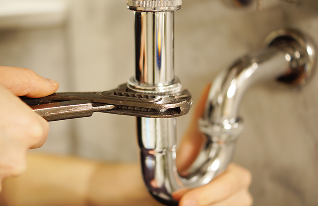
Plumbing Systems
A plumbing system is a network of pipes, fixtures, and appliances used to supply water and remove wastewater from buildings. It includes components like water supply lines, faucets, sinks, toilets, and drainage pipes. The system ensures clean water is delivered for drinking, cooking, and cleaning. Wastewater is safely carried away through drainpipes and vent systems. Plumbing relies on pressure and gravity to move water efficiently. Hot water is supplied through water heaters connected to the system. Plumbing systems also include traps and seals to prevent sewer gases from entering buildings. Proper installation and maintenance prevent leaks, blockages, and water damage. Plumbing codes and standards ensure safety and efficiency. It is essential in residential, commercial, and industrial structures.
Plumbing design is the process of planning how water will be supplied, distributed, and drained in a building. It includes the layout and sizing of water supply pipes, drainage pipes, vent lines, and sanitary fixtures like toilets, sinks, and showers. The goal is to ensure that clean water reaches all parts of the building and that wastewater is safely removed without any leakage, blockage, or backflow. Plumbing design also includes hot water systems, stormwater drainage, overhead tanks, sump tanks, and pumps as needed. In multi-storey buildings, special care is taken to maintain proper water pressure and flow on every floor. A good plumbing design ensures water efficiency, safety, hygiene, and ease of maintenance, while also following local building codes and standards.